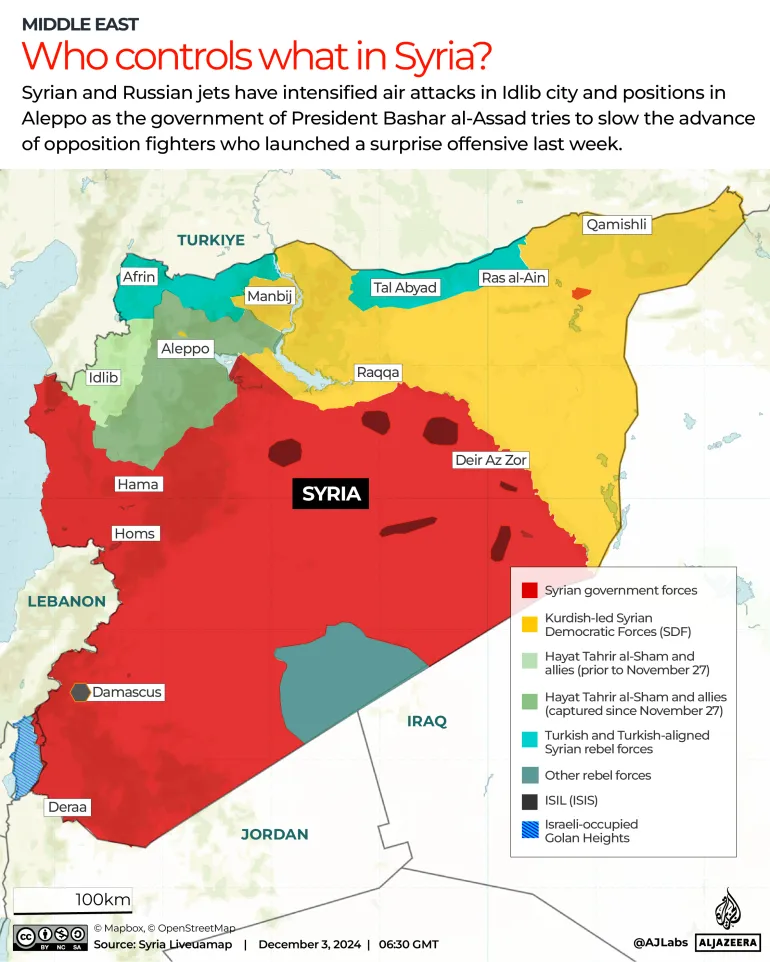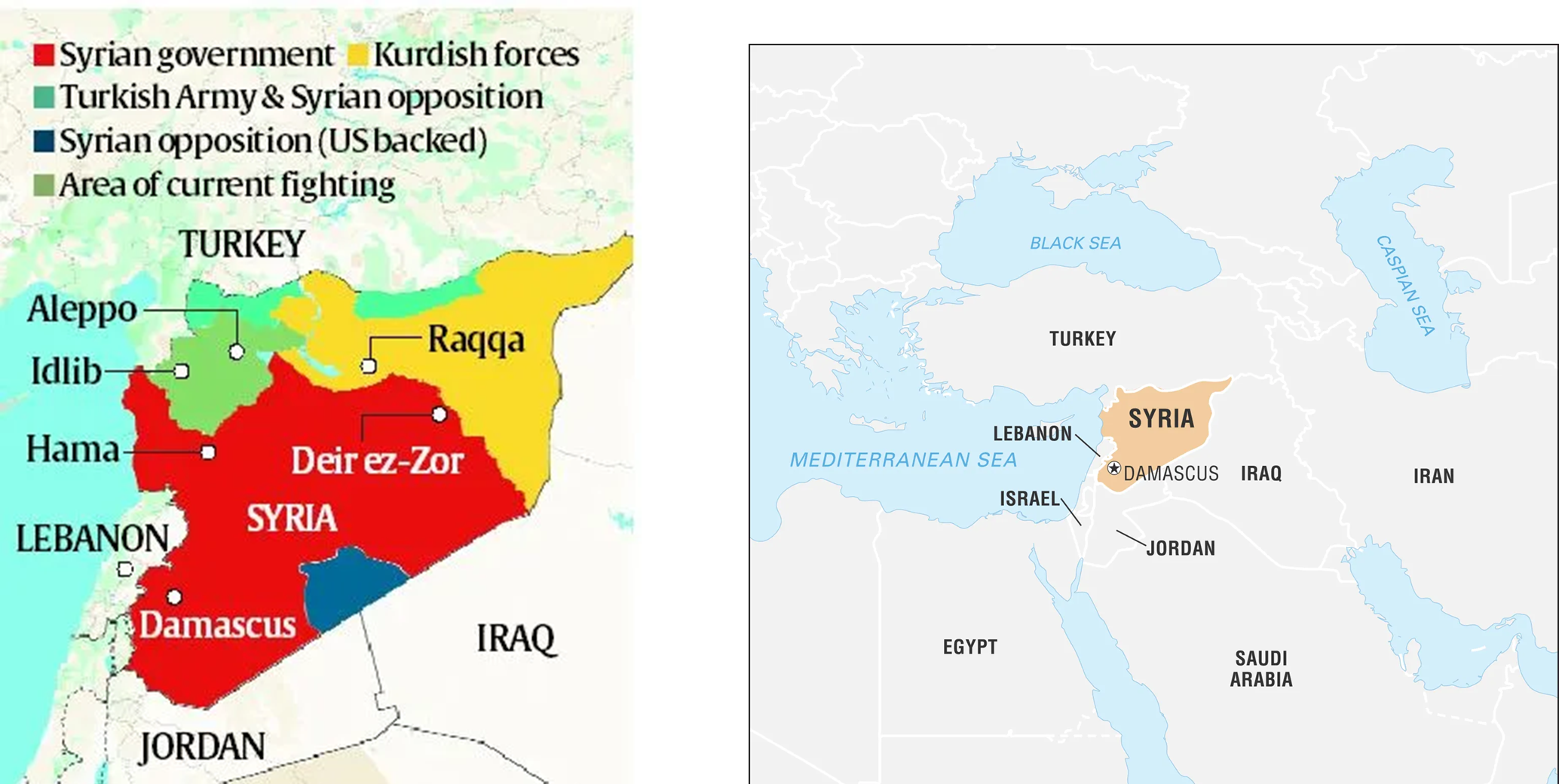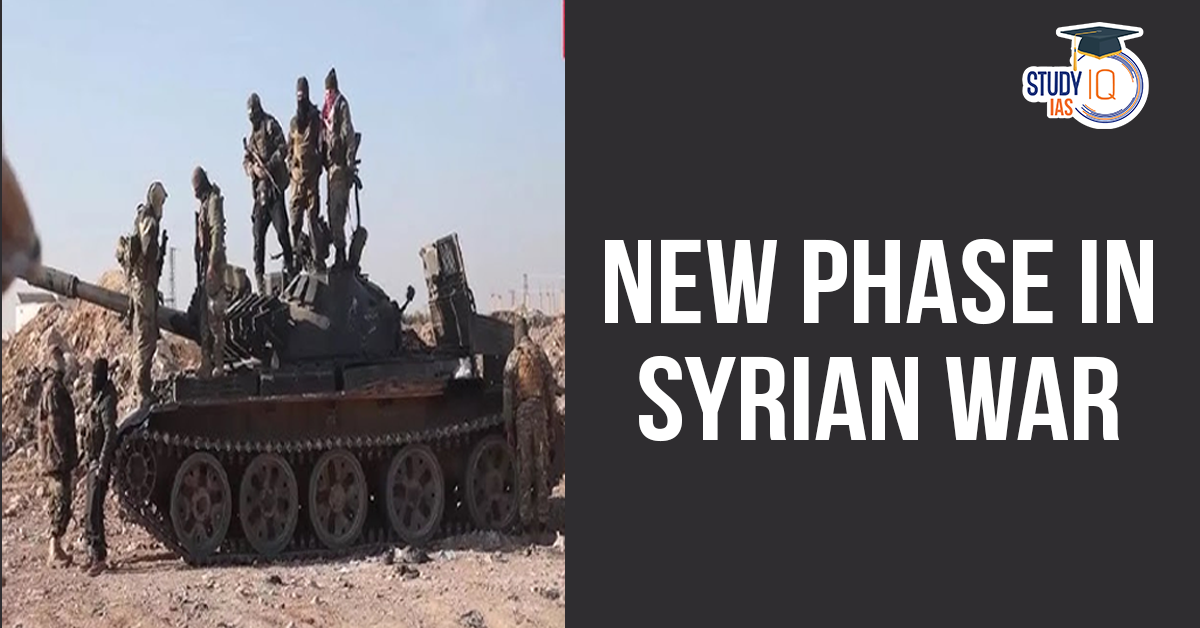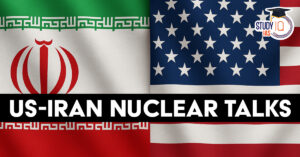Table of Contents
Context: After the fall of Bashar al-Assad’s regime in December 2024, Syria has experienced three months of instability.
Syrian War
The conflict began in 2011 during the Arab Spring, with protests against President Bashar al-Assad’s rule. Over time, the war evolved into a multi-faceted conflict involving domestic opposition groups, foreign powers and extremist organizations.
Fall Of Syria
Amid rising tensions in Syria, India issued an emergency advisory to all its citizens to leave the country at the earliest. The Ministry of External Affairs recommended that those who could travel should avail themselves of the first available commercial flights out of the country. For the rest, the MEA advised them to exercise utmost caution, avoid movement, and stay in touch with the Indian Embassy in Damascus. It comes at a time when major cities such as Aleppo and Hama have fallen into the hands of opposition forces. It’s a dangerous escalation in the Syrian civil war, but for India, safety remains top on the agenda for Indian nationals.
Who is Fighting Whom, and Why?
- Bashar al-Assad, Syria’s former president, belonged to the Alawite community (a Shia sect).
- Under his rule, Alawites dominated government positions and remained loyal to his regime.
- After Assad’s fall in December 2024, power shifted to Hayat Tahrir al-Sham (HTS), a Sunni militant group with al-Qaeda origins.
- Syrian minorities (Alawites, Christians, Druze) fear persecution under the new hardline Sunni government.
Territorial Control
- The new government does not fully control Syria.
- Assad loyalists remain active in Latakia (coastal region).
- USA-backed Kurdish Syrian Democratic Forces (SDF) operates semi-independently in Rojava (northeast Syria).

Historical Context: Why Has Syria Been in Civil War?
Assad’s Rule and the 2011 Arab Spring
- Hafez al-Assad ruled Syria from 1971 to 2000 as a dictator.
- His son, Bashar al-Assad, took over in 2000.
- The 2011 Arab Spring triggered protests against Assad, similar to uprisings in Tunisia, Egypt, and Libya.
- Protests started over economic hardship, corruption, and unemployment, but quickly turned into a civil war.
Foreign Involvement in the Syrian Conflict
- US., Israel, and Turkey–backed various rebel groups.
- Russia and Iran supported Assad and Shia militias.
- Kurds established an autonomous region in northeast Syria.
- Israel’s Role: Since Assad’s fall, Israel has intensified airstrikes, claiming it wants to prevent advanced weapons from falling into the wrong hands.
- Russia’s Role: Russia operates a major military base in Hmeimim, Latakia, where minorities are taking refuge amid the renewed violence.
Key Rebel Groups and Players in the Current Offensive
Hayat Tahrir al-Shaam (HTS)
- Origin: Began as Jabhat al-Nusra, al-Qaeda’s branch in Syria, later renamed Jabhat Fateh al-Shaam in 2016, and evolved into HTS in 2017.
- Leadership: Led by Abu Mohammad al-Jolani.
- HTS is designated a terrorist group by the US, Russia, and Turkey.
Syrian Democratic Forces (SDF)
- Composition: Kurdish militias.
- Area under control: Administers northeastern Syria autonomously.
- Former US Support: Heavily supported during the Trump administration before the abrupt withdrawal of US forces.
Syrian National Army (SNA)
- Origin: Emerged from the Free Syrian Army in 2011.
- Supported by Turkey and opposes both Assad and the SDF.
- Role: Jointly conducting operations with HTS under the “Military Operations Command” established in 2019.
Assad’s regime: Controls most of Syria, with support from Russia, Iran and Hezbollah.
Turkey: Historically backs Syrian rebels and controls trade and access in Idlib. It has controlled northern Syria since 2016.
Important Locations of Syria

| UPSC PYQ |
| Q. Consider the following pairs: (2018)
Towns sometimes mentioned in news Country
Which of the pairs given above are correctly matched? (a) 1 and 2 (b) 1 and 4 (c) 2 and 3 (d) 3 and 4 Answer: B |


 India-Middle East-Europe Economic Corrid...
India-Middle East-Europe Economic Corrid...
 US-Iran Nuclear Talks: Key Developments ...
US-Iran Nuclear Talks: Key Developments ...
 EU Plans to Slash General Data Protectio...
EU Plans to Slash General Data Protectio...





















